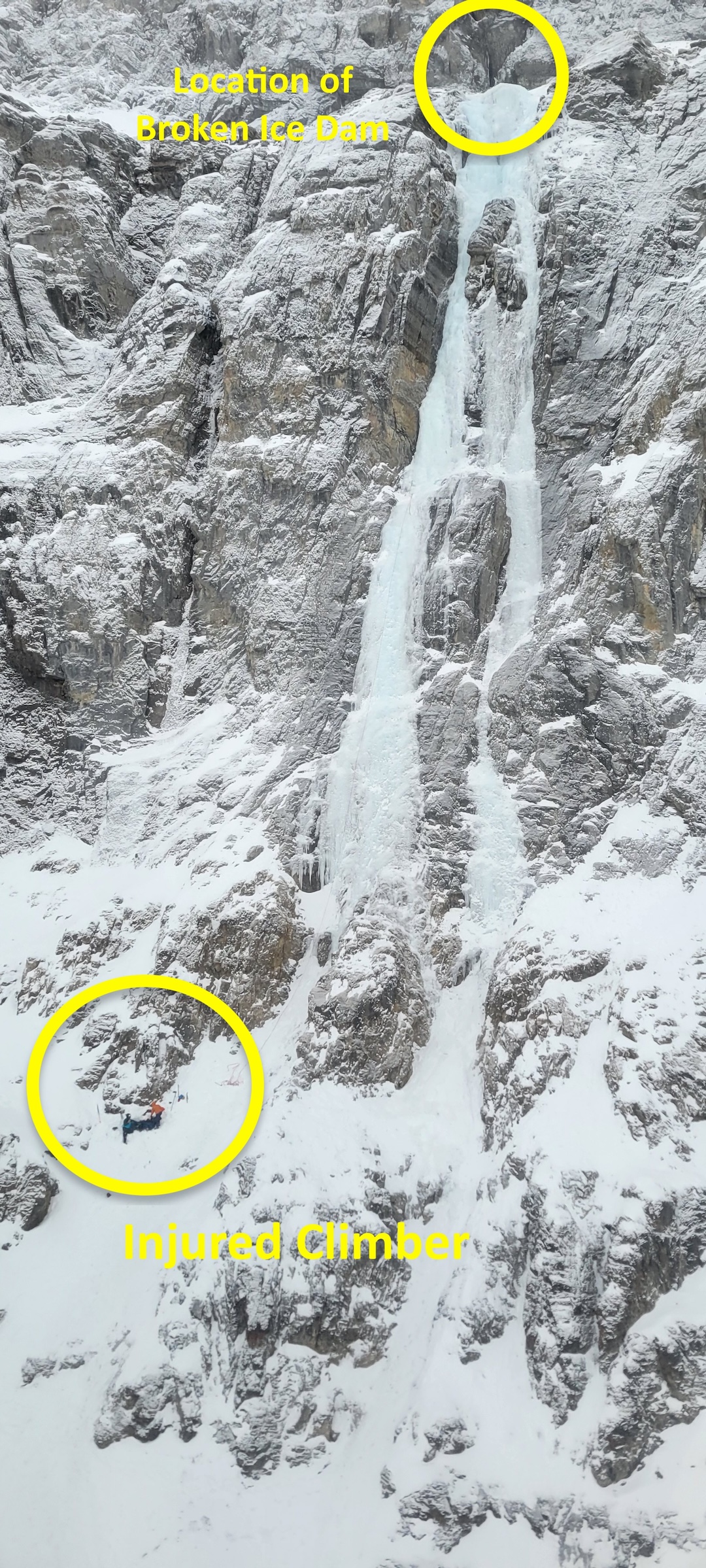Leader Fall on Ice — Poor Ice Conditions, Ice Dam
Canada, British Columbia, Kootenay National Park, Storm Creek

On December 2, a climber was nearing the top of a two-pitch ice climb called Xena (100 meters, WI3/4) in the Storm Creek area. They traversed to establish an ice anchor and broke through an ice dam with their tools. The release of water pushed them off the route, and they fell 12 to 15 meters (40 to 50 feet), breaking their right leg. The belayer was also soaked and lowered the injured climber as far as possible. The injured climber built an ice anchor and rappelled to the top of the first pitch. From there, the belayer fixed a rope to and lowered the injured climber to the ground. They then rappelled down.
A second party nearby heard the injured party yelling and came to assist. They triggered their inReach SOS feature. After the patient was made as warm and comfortable as possible, one person ran to the parking lot for more warm clothing. There they met a Parks Canada warden and were informed that a rescue soon would be launched and they did not need to return to the climb with the clothing.
A Visitor Safety team was slung into the rescue site by helicopter. The rescuers splinted the patient’s leg, packaged them in a vacuum mattress, and heli-slung them to a waiting ambulance at the Stanley Glacier parking lot. The patient had a serious tibia-fibula break, mild hypothermia, and vascular damage to a leg, and they experienced compartment syndrome.
ANALYSIS
While ice dams with large amounts of water behind them are not common on ice climbs, a significant number of people have encountered this type of event over the years. They generally form on relatively low-angle sections, often at the top of columns or steep ice. Though this hazard may be difficult to anticipate, it reinforces the need to place good and frequent protection, especially before topping out on a route, even if the terrain is easy. Frequent protection can help minimize the length of a fall and reduce the potential for serious injury.
The party had an inReach but had left it in a pack at the base of the route. This led to a delay in calling for outside resources until the second group of climbers arrived. In this case, the delay was not too significant. However, with reduced daylight hours for helicopter response in winter, it’s a good idea to keep your emergency communication device with you while climbing. This will maximize the chances of a quick rescue and can improve patient outcomes.
The party was able to get the patient to the base of the route, which helped speed up the rescue. Both the belayer and the injured climber were soaked, and this led to significant heat loss while waiting. The group did their best to put packs and other insulation under the patient to get them off the cold ground. While it may not be practical to bring enough extra clothes and insulation to deal with an emergency, some form of lightweight shelter can substantially reduce heat loss and help with patient outcomes. The more you can insulate a patient from the cold ground, the better.
Sending an extra person out to get more clothing and insulation was a good move, despite this assistance ultimately not being needed. Had any delays in helicopter access occurred, the extra supplies would have made a big difference. (Source: Ian Jackson, Parks Canada.)

